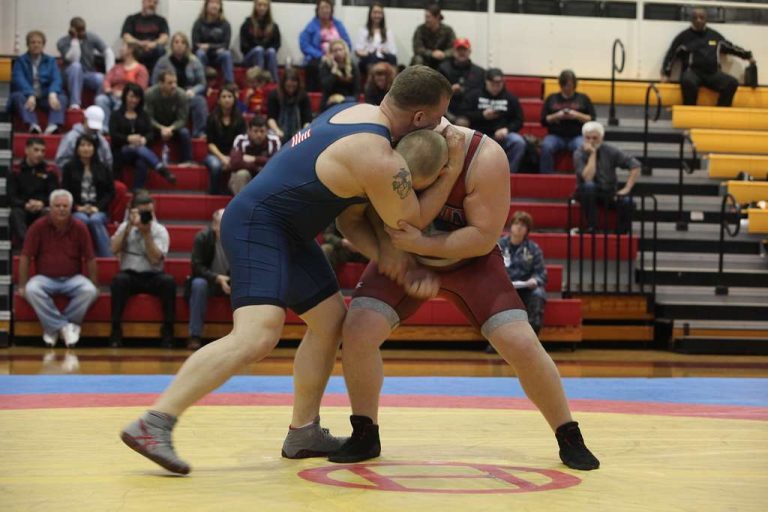General Rules of Freestyle Wrestling
To understand freestyle wrestling rules, learn the scoring system – points for takedowns, reversals, and controls. Master single and double leg takedowns, avoiding fouls. Maintain mat awareness and use space strategically. Ground control is crucial for submissions. Caution and penalties affect match progression. Matches have two three-minute periods – manage energy wisely. Build endurance for peak performance. Overtime occurs in tied scores – be mentally prepared. These basics lay the foundation for mastering freestyle wrestling techniques and strategies.
Scoring System
When wrestling, points are awarded based on specific actions and maneuvers executed during the match. Understanding the criteria for scoring in freestyle wrestling is important for a strategic approach to secure victory. Points are awarded for various moves such as takedowns, reversals, exposures, and penalties.
In freestyle wrestling, a takedown is one of the fundamental ways to score points. It involves taking your opponent down to the mat and establishing control. Takedowns are usually awarded two points. Additionally, a reversal, where a wrestler who is underneath gains control over the opponent, also earns two points.
Exposures are another scoring opportunity in freestyle wrestling. When a wrestler exposes their opponent's back to the mat at an angle of less than 90 degrees, they are awarded two points. Continuous action and control are essential to scoring in freestyle wrestling, making a strategic approach important for success on the mat. Understanding these criteria will help you navigate the match effectively and capitalize on scoring opportunities.
Takedown Rules
When it comes to takedowns in freestyle wrestling, understanding the Single Leg Takedown and Double Leg Takedown is essential. These points are the foundation of initiating a successful takedown in a match. Mastering the techniques for executing these takedowns can greatly improve your scoring opportunities on the mat.
Single Leg Takedown
Commonly utilized in freestyle wrestling, the single leg takedown is a fundamental move used to quickly gain an advantage over your opponent. When executing this technique, focus on controlling your opponent's leg and hip movement to secure the takedown effectively. Here are some key points to bear in mind:
- Technique Breakdown: Start by shooting in on your opponent's lead leg, making sure to lower your level and grab the leg securely to prevent any counterattacks.
- Common Mistakes: Avoid leaning too far forward during the takedown, as this can compromise your balance and leave you vulnerable to being sprawled on.
- Drills, Training Tips: Practice your single leg takedown with resistance from a partner to improve your speed and timing in executing the move accurately.
Double Leg Takedown
To execute a successful Double Leg Takedown in freestyle wrestling, focus on simultaneously attacking both of your opponent's legs with speed and precision. This takedown is a fundamental technique that can offer a significant advantage in a match. Here are some key points to keep in mind:
| Technique Variations | Defensive Strategies | Common Mistakes |
|---|---|---|
| Change levels quickly | Sprawl to defend | Dropping the head |
| Drive through your opponent | Control the wrists | Overcommitting |
| Use explosive power | Circle away from the attack | Neglecting setups |
Out of Bounds
When wrestling, you must stay within the designated boundaries at all times to remain in play. If you go out of bounds, the match will be stopped, and you will restart in the center of the mat. This rule guarantees fair play and upholds the integrity of the match.
Stay Within Boundaries
Ensuring you remain within the boundaries during a freestyle wrestling match is essential to avoid penalties and maintain fair competition. Boundary control is pivotal in freestyle wrestling, and mastering footwork techniques can help you navigate the mat effectively. Here are three key points to contemplate:
- Maintain Awareness: Stay mindful of your position on the mat at all times. Being aware of the boundaries can prevent you from accidentally stepping out and incurring penalties.
- Utilize Lateral Movement: Incorporate lateral footwork to maneuver within the boundaries strategically. Moving side-to-side can help you control the center of the mat and stay in bounds during the match.
- Practice Positioning: Work on positioning drills to improve your spatial awareness and ensure you stay within the designated wrestling area throughout the bout.
Restart in Center
Mastering the technique of restarting in the center after going out of bounds is essential in freestyle wrestling to maintain the flow and fairness of the match. Quick restarts play an important role in preventing stalling and ensuring continuous action. When restarting, both wrestlers return to the neutral position, with the center focus enabling a fair chance for both competitors to gain a strategic advantage. The neutral position allows for an equal start, eliminating any potential bias that may arise from being out of bounds. Wrestlers must capitalize on the restart, utilizing their skills and strategies to gain control and dominance over their opponent. Understanding the importance of quick restarts and the neutral position in the center is key to achieving success in freestyle wrestling.
Par Terre Position
To effectively execute the Par Terre position in freestyle wrestling, understanding the key principles of control and leverage is essential. When you find yourself in the Par Terre position, remember these important points:
- Ground Control: Maintaining control over your opponent while on the ground is paramount in the Par Terre position. Use your body weight and positioning to limit their movements and prevent them from escaping or countering effectively.
- Submission Techniques: In the Par Terre position, submission techniques can be powerful tools to secure a win. Utilize joint locks, chokes, or other submission holds to force your opponent into a position where they must concede defeat.
- Utilize Leverage: Leverage plays a significant role in the effectiveness of your techniques from the Par Terre position. By understanding how to leverage your body against your opponent's, you can amplify the force behind your movements and submissions, increasing your chances of success.
Caution and Penalty Points
When discussing Caution and Penalty Points in freestyle wrestling, it is important to understand the implications of these rulings on match outcomes and player strategies. Warning signs play a vital role in the progression of a match. If a wrestler accumulates multiple cautions for minor infractions, it can lead to penalty points being awarded to the opponent, potentially altering the course of the match. These warnings serve as a signal for wrestlers to correct their behavior to avoid further consequences.
Fouls in freestyle wrestling can result in match interruptions and the awarding of penalty points to the opponent. Intentional fouls or repeated infractions can lead to disqualification, which has serious consequences for the offending wrestler. Understanding the rules regarding fouls and penalties is essential for wrestlers to compete effectively while avoiding costly mistakes.
Match Duration
Understanding the duration of a freestyle wrestling match is essential for strategizing effectively and maximizing your performance on the mat. In a standard freestyle wrestling match, the duration is determined by time limits set for each period. Here are three significant aspects to keep in mind regarding match duration:
- Time Limits: Freestyle wrestling matches typically consist of two periods, each lasting three minutes. However, in certain competitions, the duration may vary based on the level of the wrestlers and the specific event rules. It is important to pace yourself and manage your energy throughout each period strategically.
- Match Strategy: Given the finite time allocated for each period, developing a sound match strategy is imperative. Utilize your understanding of the clock to plan your moves effectively, considering when to push the pace, conserve energy, or launch an attack. Endurance plays a significant role in sustaining your performance until the final whistle.
- Overtime: In the event of a tied score at the end of regulation time, freestyle wrestling matches can enter overtime. Overtime rules may vary, but it commonly involves additional periods or specific criteria to determine the winner. Being prepared for the possibility of overtime requires mental resilience and adaptability in your match approach.
Frequently Asked Questions
Can a Wrestler Use Any Part of Their Body to Score a Takedown, or Are There Specific Rules About What Constitutes a Legal Takedown?
To score a takedown in wrestling, you must adhere to specific rules on body positioning and utilize legal techniques with control. Proper leverage and strategic use of any body part can lead to successful takedowns.
How Are Cautions and Penalty Points Determined in Freestyle Wrestling, and What Actions by a Wrestler Can Result in These Penalties?
In freestyle wrestling, cautions and penalty points are assigned based on your actions. Caution consequences include warnings for minor infractions, while penalty points are awarded for more serious offenses. Illegal actions can lead to penalties.
Are There Any Specific Strategies or Techniques That Wrestlers Commonly Use to Gain an Advantage in the Par Terre Position?
To gain an advantage in the par terre position, wrestlers commonly employ various strategies such as controlling the opponent's hips, utilizing hand fighting techniques, and executing defensive maneuvers like posting on the mat.
What Happens if a Wrestler Goes Out of Bounds During a Match, and How Is the Match Restarted After This Occurs?
When a wrestler goes out of bounds during a match, the action stops, and the match restarts at the center of the mat. This break in match management can affect stamina techniques, making strategic positioning critical.
How Does the Match Duration in Freestyle Wrestling Differ From Other Styles of Wrestling, and What Are Some Common Tactics Wrestlers Use to Manage Their Energy and Stamina Throughout a Match?
Feeling lost in the ring with time slipping away? In freestyle wrestling, match duration varies, requiring strategic energy management. Wrestlers employ pacing strategies, conditioning, and mental toughness to sustain stamina and outlast opponents in the intense battle.





